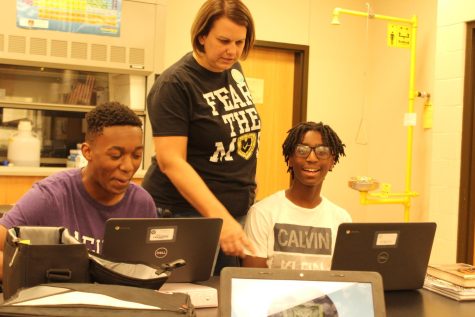Learning Styles: Psuedo or Science?
September 7, 2022






Teachers and students alike have probably all heard of the supposed cure-all learning styles, but they may not be as amazing as some have been taught to think.
First, it is important to establish what a learning style is. Nancy Chick from Vanderbilt University describes it as a certain way “learners gather, sift through, interpret, organize, come to conclusions about, and ‘store’ information for further use.” It is thought that if a person studies according to their learning style(s), they will not only enjoy it more, but retain the information better and become more productive.
It is also essential to discuss the different types of learning styles. While there are many, the learning styles most often mentioned are: visual, auditory, reading/writing (also known as literary), and kinesthetic. This is sometimes shortened to VARK. For the sake of explanation, say there is a group of students in science class learning about molecules, a bond of two or more atoms, and how they are formed. Theoretically, a kid who has a visual learning style might learn best by looking at diagrams of how molecules are formed. On the other hand, a kid with an auditory learning style would probably learn best by having the teacher explain it to them. For the reading/writing kid, it would probably be reading and researching, and for the kinesthetic kid, it might be putting a molecule model together.
Now that the main information is out of the way, on to discuss the elephant in the room: do learning styles actually work? In theory, they should. After all, if an individual studies in a way that is enjoyable to them, they would be more productive and proficient, right? Well, according to the American Psychological Association and the Association for Psychological Science, the case may be quite the opposite.
The APS points out that the learning style theory lacks any credible evidence. Many studies have been conducted trying to prove the effectiveness of learning styles, and, while most of them do prove that many people have favored ways of learning, all of them fail to support the idea that categorically isolated learning works.
The APA highlights a study that separated a group of people into four categories: auditory learners who would learn auditorily, auditory learners who would learn literarily, literary learners who would learn auditorily, and literary learners who would learn literarily.
Each group, no matter their supposed style, would study according to what they were assigned, and then everyone would take the same test. Results showed that the people who learned auditorily – whether it was their supposed learning style or not – did noticeably worse on the test than the literary group. Similarly, the people who were told to learn literarily did significantly better on the test, even if it was not their preferred learning style.
The strong and long-lasting belief in learning styles among educators and students alike may be a false hope for some, while an honest mistake for others. So, whether you hate to learn visually, or hate to learn auditorily, or hate to learn at all, it might be best to research methods that are all-inclusive. After all, it’s better to learn as many ways as possible than to stick to just one, right? Better safe than sorry.
Stay educated.


